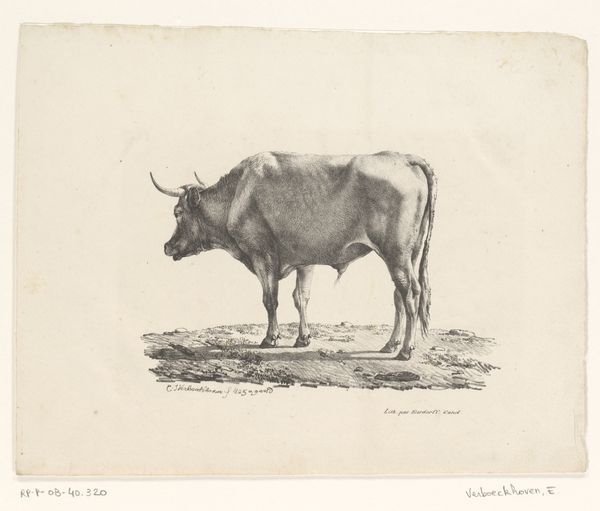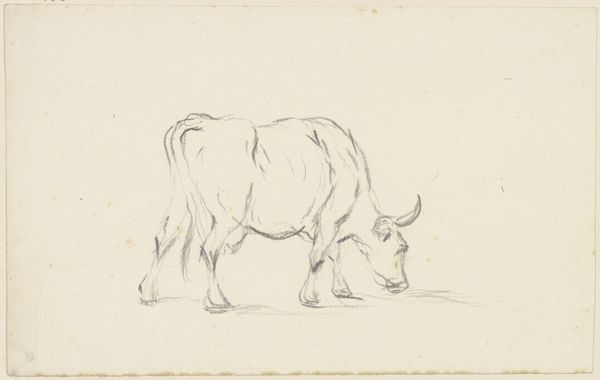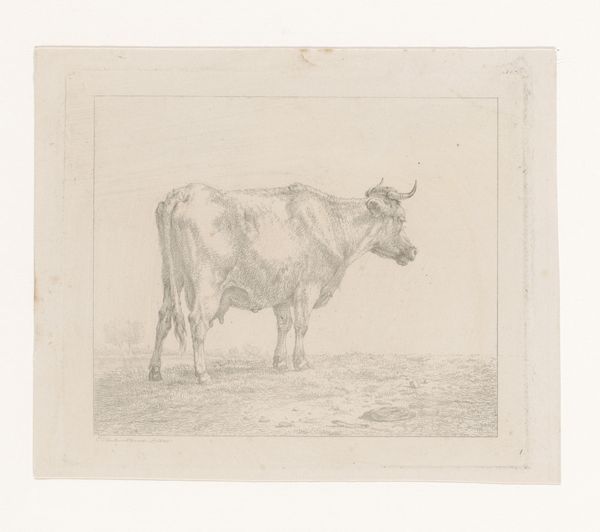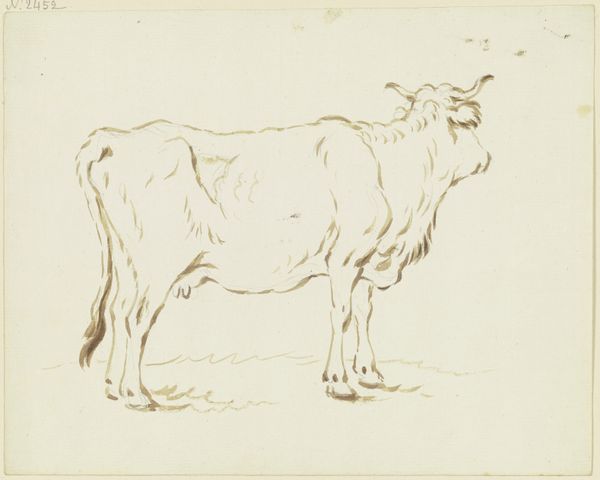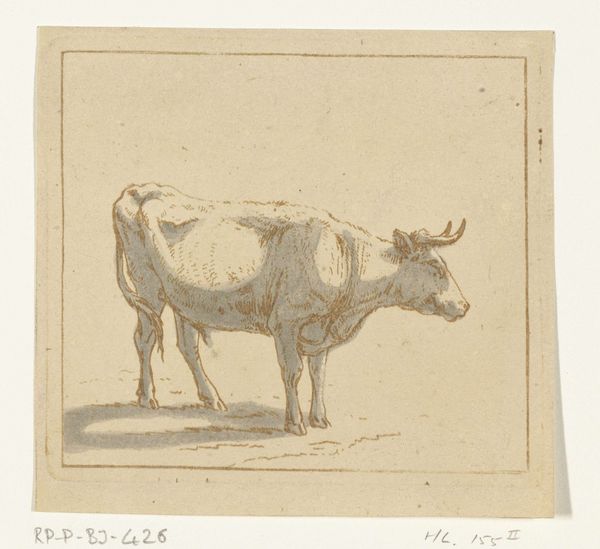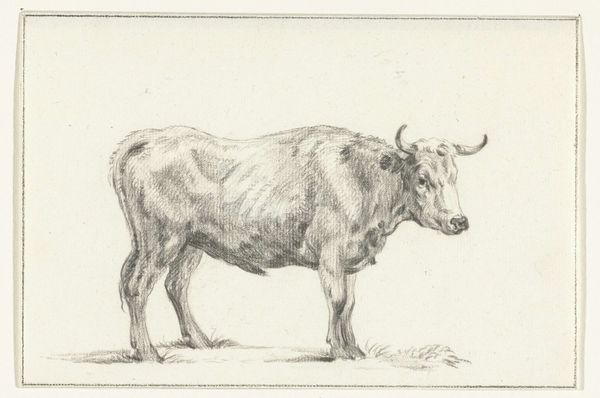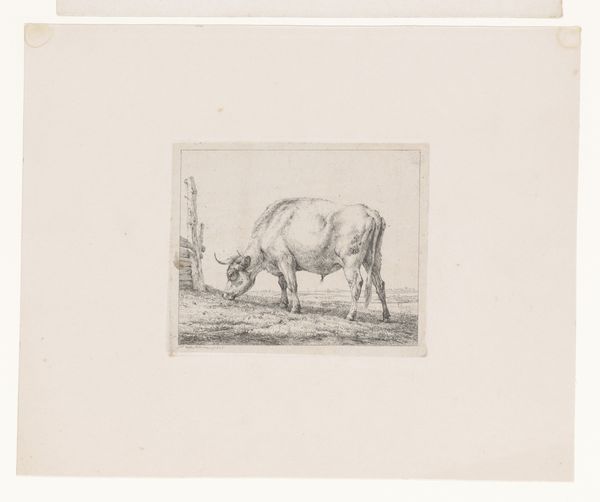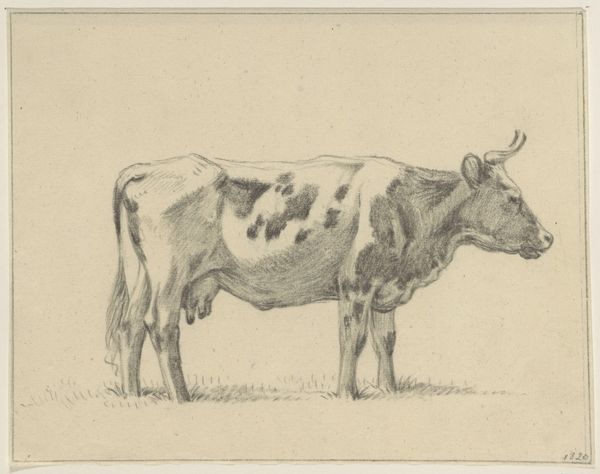
drawing, pencil
#
drawing
#
pencil sketch
#
landscape
#
pencil
#
realism
Dimensions: height 120 mm, width 122 mm
Copyright: Rijks Museum: Open Domain
Editor: This pencil drawing by Johan Jakob Biedermann, simply titled 'Standing Ox,' was created sometime between 1778 and 1830. I’m struck by its stark realism; it feels very immediate. What do you see in this piece? Curator: I see echoes of ancient practices and beliefs woven into this seemingly simple drawing. Oxen have been powerful symbols for millennia, representing strength, provision, and sacrifice in various cultures. Do you see anything in the drawing suggesting how the ox may have been regarded at the time of the drawing? Editor: I guess the harness indicates it's a beast of burden? Maybe just livestock? Does the harness imply a shift away from the more ancient symbolisms? Curator: Not necessarily a complete shift, but perhaps an overlay. Consider how agrarian societies have long associated oxen with fertility and the earth. Even with the harness signifying labor, these primal associations linger. The ox carries a collective memory of our dependence on and respect for the natural world, overlaid with the practicality of 18th-19th century farm life. Note how it is the only figure represented; the rest of the scene is barren. Editor: So the drawing becomes a meditation on this intersection of symbolic weight and everyday reality? Curator: Precisely. The artist isn’t just drawing an ox; he's capturing a cultural touchstone, a visual representation of enduring relationships between humanity and nature, work and survival. What’s more, there’s incredible intimacy here, not as a distant observation, but an embodied engagement. Editor: That's a great point. It makes me look at it completely differently now. The drawing seemed simple, but now it seems loaded with meaning. Curator: It’s in those subtleties where true understanding lies. The humblest image can become a portal to the past.
Comments
No comments
Be the first to comment and join the conversation on the ultimate creative platform.

